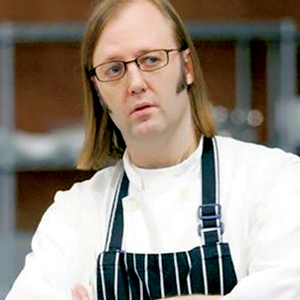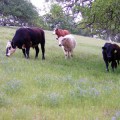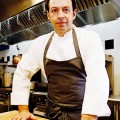In the premier issue of Lucky Peach, the cool new quarterly food magazine from New York chef David Chang, Chang’s fellow chef and drinking buddy Wylie Dufresne rails against farm-to-table cuisine and “ingredient-driven cooking.” Dufresne is the chef at WD-50, an outpost of avant-garde cuisine in New York City, where he uses the techniques of a chef, chemist and sculptor to create a highly inventive, technically exacting brand of cooking.
In a conversation published in Lucky Peach about mediocrity between Chang, Dufresne and Anthony Bourdain, Dufresne takes aim at a certain kind of cuisine. “It’s shit, like pea shoots tossed in olive oil with some Parmesan cheese shaved on it and then people go gaga,” he says. “That’s the shit the bothers me—that farm-to-table bullshit. … Come on. There’s too much of it. It’s oversaturated.”
I say there’s not enough of it. The restaurant industry loves its trends (“fast casual,” “Cal-Ital,” “small plates,” “chef-driven cuisine,” and “New American” come to mind). Like any concept that has gained popular acceptance, the term “farm-to-table” attracts posers attempting to jump on the bandwagon and cash in. The August issue of Bon Appetit features an article about Manresa chef David Kinch and his exclusive relationship with Love Apple Farm. He derides chefs who grow a few carrots and say hey, look at me, I’m farm-to-table.
(Manresa is an atypical farm-to-table restaurant in that Kinch’s highly inventive cooking has little in common with the rustic, simple fare often featured farm-to-table restaurants, but with a farm all his own, Manresa is a special kind of farm-to-table restaurant.)
Farm-to-table is enjoying a popular run, but I believe it’s more than a trend. What is farm-to-table exactly? All food starts on a farm and ends up on the table right? Well, yes, but properly applied, the term denotes those restaurants that define themselves by the quality of their ingredients and often have special relationship with farms and artisanal purveyors and as such celebrate local and seasonal food and produce. The farms are part of a larger food community that supports a local food scene—farmers, ranchers, creameries, fishermen and winemakers.
And, yes, it is “ingredient-driven.” Of course, all food is ingredient-driven, but in spite of Dufresne’s mockery, the term has meaning. It denotes food in which a chef showcases a few particularly fresh and delicious ingredients, such as a tomato and watermelon salad. This stands in contrast to food that’s either made from lackluster, restaurant-service-truck ingredients or food that’s been so manipulated it’s hard to discern what the original ingredients were.
Beyond the quality of local and seasonal food and the communities they nurture, farm-to-table restaurants like Flea St. Café, the Village Pub, Station 1, Madera and Manresa all help bridge the gap between diners and the source of their food. When it comes to eating and ingredients, ignorance is not bliss.
I don’t care what cool New York chefs say. Farm-to-table is cool.

 No Losing the Need for Speed
No Losing the Need for Speed  San Jose to Keep More Pot Clubs?
San Jose to Keep More Pot Clubs? 


